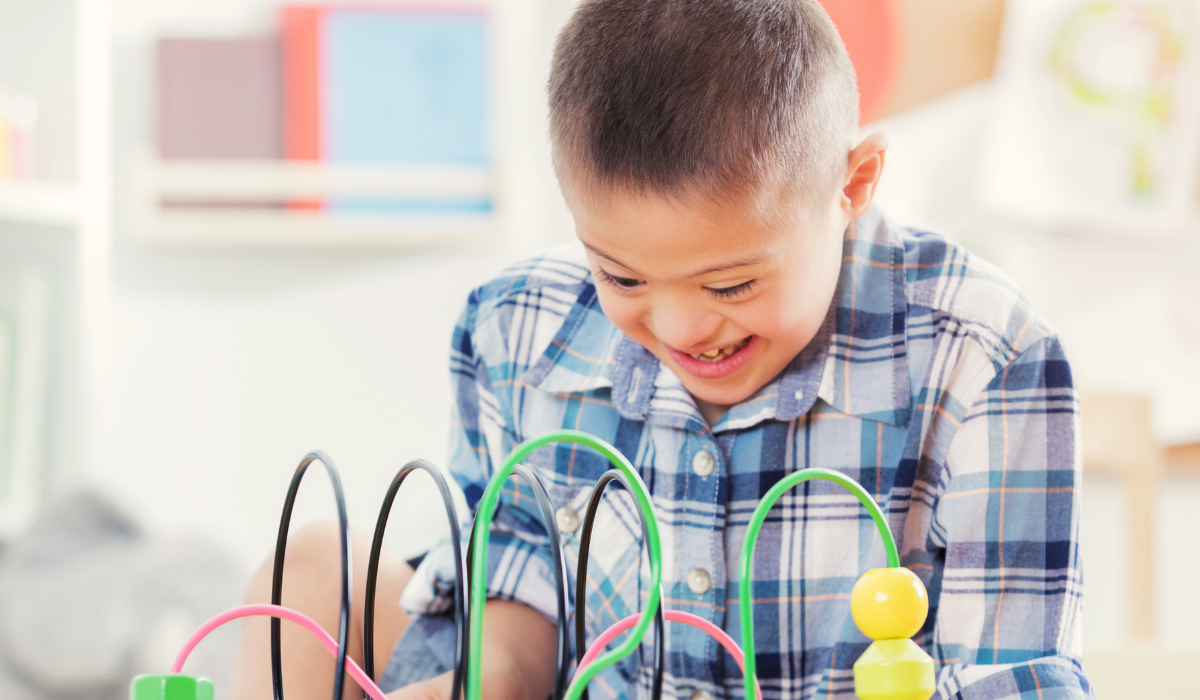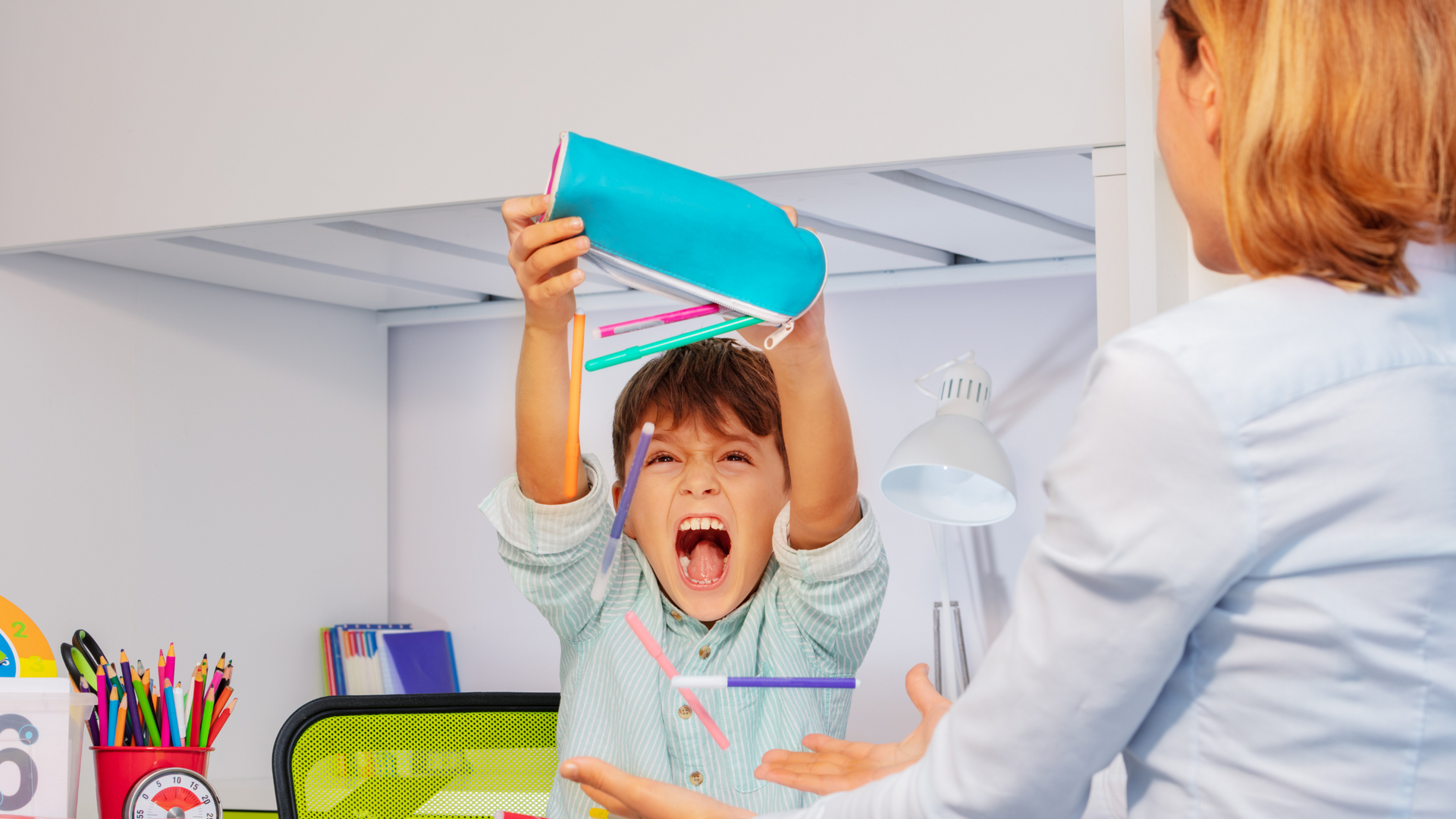How ABA Therapy Improves Classroom Behavior and Learning
Reece Epstein • June 22, 2025
See how ABA therapy supports better behavior and learning in the classroom.

Applied Behavior Analysis (ABA) therapy is a research-based approach used to improve behavior, communication, and learning skills. Originally designed for home or clinic settings, ABA is now widely recognized as a valuable tool in educational environments. More and more schools are integrating ABA strategies to help students with behavioral, emotional, or learning challenges thrive in structured settings. This article explores how ABA therapy enhances classroom behavior and supports academic success.
Understanding ABA Therapy in the School Context
ABA is rooted in the science of learning and behavior. It works by identifying specific behaviors, understanding their causes, and using positive reinforcement to encourage desired actions. In the classroom, ABA is not a one-size-fits-all model. Instead, it is highly individualized, targeting each student’s unique needs to foster positive outcomes. With the support of an experienced ABA therapist Maryland families and schools can access tailored interventions that make a real difference in students’ behavior and learning.
When implemented in schools, ABA focuses on promoting helpful behaviors and reducing those that interfere with learning. Teachers, aides, and behavior specialists often collaborate to deliver interventions directly in the classroom or in a small-group setting. The consistent application of evidence-based strategies helps create a more organized, focused, and supportive learning environment for all students.
Benefits of ABA Therapy for Classroom Behavior
1. Improved Focus and Attention
Many students struggle with maintaining focus in a classroom setting. Distractions, lack of structure, or difficulty transitioning between tasks can lead to decreased engagement. ABA techniques such as prompting, reinforcement, and visual schedules can help students remain on task and transition smoothly from one activity to another. These strategies improve the student’s ability to follow instructions, participate in group activities, and complete assignments.
2. Reduction in Disruptive Behaviors
Disruptive behaviors, such as calling out, leaving the seat without permission, or refusing to follow rules, can hinder not only the student’s progress but also the learning of others. ABA focuses on understanding the function of these behaviors—why the student is acting out—and replacing them with more appropriate alternatives. For example, a student who seeks attention through disruptive actions might be taught to request help or raise a hand instead. Over time, positive behaviors become more frequent, and classroom disruptions decrease.
3. Increased Positive Peer Interaction
Social challenges can make it difficult for students to form friendships and work cooperatively with classmates. ABA programs can teach essential social skills, such as turn-taking, asking for help, or initiating conversations. In a classroom setting, these skills are practiced during group activities, recess, and collaborative projects. As students become more comfortable engaging with their peers, their confidence and sense of belonging grow.
4. Strengthened Emotional Regulation
Managing frustration, disappointment, or changes in routine is difficult for many learners. ABA incorporates techniques such as modeling, role-playing, and reinforcement to teach coping strategies. Students learn to recognize their emotions, identify triggers, and use calming strategies like deep breathing or requesting a break. With improved emotional regulation, students are better prepared to navigate the demands of a busy classroom environment.
How ABA Therapy Supports Academic Achievement
1. Clear and Measurable Goals
One of the foundational principles of ABA is the use of clear, specific, and measurable goals. Whether the goal is to improve reading comprehension, complete math assignments independently, or increase class participation, progress is continuously tracked and evaluated. This data-driven approach ensures that interventions are effective and that any necessary adjustments are made quickly.
2. Task Analysis for Complex Skills
Many academic tasks involve multiple steps. For example, writing an essay requires planning, organizing ideas, drafting, editing, and submitting. ABA uses a technique called “task analysis” to break down these larger goals into manageable steps. Each step is taught individually and reinforced until the student can complete the full task with confidence. This method builds mastery over time and reduces feelings of overwhelm.
3. Promoting Independence
A key goal of ABA in education is to help students become more independent learners. This includes organizing materials, asking for help appropriately, and completing assignments on time. ABA strategies gradually reduce prompts and support as the student demonstrates success, fostering self-reliance and responsibility. This increased independence not only benefits academic performance but also supports future success in higher education or the workplace.
4. Consistency Across Learning Environments
ABA emphasizes consistency and structure. When these principles are applied throughout the school day—in various classes, with different teachers, and during transitions—the student experiences a more predictable and supportive learning environment. Consistency helps students generalize skills across subjects and settings, making it easier to apply what they’ve learned to new situations.
Collaboration Between Educators and ABA Professionals
For ABA to be successful in schools, collaboration is essential. Teachers bring deep knowledge of curriculum and classroom management, while ABA professionals contribute expertise in behavior analysis. Together, they create strategies that align with academic goals and classroom routines.
This collaboration might involve:
- Developing individualized behavior support plans
- Conducting functional behavior assessments
- Training school staff to implement interventions
- Monitoring and adjusting strategies based on data
Effective communication ensures that all adults working with the student are on the same page, using consistent language, expectations, and reinforcements. This unified approach boosts the likelihood of student success.
ABA Strategies Commonly Used in Classrooms
Here are some of the most effective ABA techniques that can be adapted for classroom use:
1. Positive Reinforcement
One of the most well-known strategies in ABA is positive reinforcement—rewarding a student when they demonstrate desired behaviors. This can be as simple as verbal praise, earning a preferred activity, or receiving tokens that can be exchanged for a prize. Reinforcement increases the likelihood that the behavior will occur again.
2. Prompting and Fading
When introducing new skills, students may need help or cues to respond correctly. Prompts can include verbal reminders, gestures, or visual aids. As the student becomes more proficient, prompts are gradually reduced (faded) to encourage independent performance.
3. Modeling
Demonstrating appropriate behavior before asking the student to perform it themselves is known as modeling. For example, a teacher might model how to raise a hand before answering a question. This helps students understand expectations and increases the likelihood of success.
4. Visual Supports
Visual schedules, choice boards, and checklists are tools that help students understand what is expected and what comes next. These supports are particularly effective for students who benefit from concrete representations of time and tasks.
5. Behavior Contracts and Self-Monitoring
Older students can benefit from behavior contracts, which outline expectations and rewards. They can also be taught to monitor their own behavior using simple checklists. This promotes accountability and helps them take ownership of their progress.
Addressing Misconceptions About ABA in Schools
Some educators and parents are hesitant about using ABA in classroom settings due to misunderstandings. Common concerns include the belief that ABA is rigid, overly structured, or only suitable for specific populations. In reality, ABA is highly adaptable and can be customized to support a wide range of learning and behavioral needs.
Another misconception is that ABA requires constant one-on-one attention. While some students may benefit from intensive support, many strategies can be incorporated seamlessly into the classroom routine, benefiting both the individual student and the entire class.
Long-Term Benefits of ABA in Education
The benefits of ABA extend far beyond daily classroom performance. Over time, students gain:
- Improved self-management and independence
- Stronger communication and interpersonal skills
- Increased confidence and willingness to participate
- Better preparation for transitions to higher education or employment
When schools invest in ABA-based support, they’re not just addressing immediate challenges—they’re laying the foundation for long-term growth and success.
Conclusion
ABA therapy offers a powerful framework for improving classroom behavior and learning. Its emphasis on individualized strategies, positive reinforcement, and measurable outcomes makes it a valuable tool in any educational setting. By integrating ABA techniques into the classroom, schools can create inclusive, supportive, and effective environments where all students can thrive.
When educators and ABA professionals collaborate closely, they empower students with the tools they need to succeed—academically, socially, and emotionally. With the right support, every student has the potential to reach their full capabilities.
About Us
At Able Minds ABA, we offer personalized and effective ABA therapy. Contact us today to get started.
FAQ’s
What is ABA therapy in a school setting?
ABA therapy in schools focuses on helping students improve behavior, communication, and learning skills using positive reinforcement and structured strategies. It is tailored to each student’s needs and delivered through collaboration between teachers and behavior specialists, often during regular classroom activities.
How does ABA improve student focus?
ABA helps students improve focus by using tools like visual schedules, prompting, and reinforcement. These techniques guide students to stay on task, transition smoothly between activities, and complete assignments independently, improving overall classroom engagement and participation.
Can ABA therapy reduce disruptive behavior in class?
Yes. ABA identifies the reasons behind disruptive behaviors and teaches students positive alternatives, like asking for help or using appropriate signals. Over time, unwanted behaviors decrease, and students learn better ways to express needs and follow classroom rules.
Does ABA therapy support academic learning?
ABA supports academics by breaking complex tasks into smaller, manageable steps through a method called task analysis. It promotes independent learning, goal setting, and consistent reinforcement, which helps students master academic skills and succeed in various subjects.
Is ABA therapy only for individual sessions?
No. While some students benefit from one-on-one support, many ABA strategies can be used in group settings. Teachers and staff can incorporate ABA techniques into daily routines to support all learners, making it a flexible and inclusive approach for classrooms.

Choosing the right ABA therapy provider is a crucial step toward helping your child achieve greater independence, improved communication, and better social skills. In Maryland, families are fortunate to have a growing number of options for applied behavior analysis therapy , but with so many choices, it can be overwhelming to know where to begin. Whether your child has just received a diagnosis or you’re transitioning between providers, selecting the best fit means looking beyond the surface. The right provider offers not just therapy sessions—but compassionate care, individualized plans, and a team committed to your child’s long-term success. What Is Applied Behavior Analysis (ABA) Therapy? Applied behavior analysis therapy is a science-backed intervention that focuses on understanding and improving behaviors. It’s particularly effective for children who face developmental and behavioral challenges, such as autism. ABA breaks down complex skills into manageable steps and uses positive reinforcement to help children master those skills. A certified applied behavior analyst therapist develops personalized programs tailored to each child's strengths, challenges, and goals. Over time, ABA can help build critical life skills such as communication, emotional regulation, cooperation, and self-help. Why Finding the Right ABA Provider in Maryland Matters Not all ABA therapy providers offer the same level of care. In a state like Maryland—with diverse communities from Baltimore to Silver Spring to Annapolis—parents must carefully evaluate local providers based on their approach, credentials, and experience. Choosing the right partner for your child’s development ensures: Faster progress through tailored interventions Stronger collaboration between family and therapists Better preparation for school and social life Whether you're seeking applied behavioral analysis Maryland services in-home or in-clinic, quality and fit matter. Step-by-Step Guide to Choosing the Best ABA Therapy Provider in Maryland 1. Confirm Credentials and Certification The most reputable ABA therapy providers in Maryland are staffed with: Board Certified Behavior Analysts (BCBAs) – who design and oversee your child’s treatment Registered Behavior Technicians (RBTs) – who implement the therapy under BCBA supervision Always verify the provider is licensed to deliver applied behavior analysis therapy in Maryland. Check credentials through: Behavior Analyst Certification Board (BACB) Maryland Department of Health 2. Ask About Treatment Philosophy No two children are alike. That’s why effective ABA therapy is never “cookie-cutter.” Look for providers who: Conduct detailed initial assessments Develop individualized treatment plans Use data to guide decisions Adjust strategies as your child grows The best applied behavior analyst therapists focus on creating measurable, achievable goals tailored to your child’s unique needs. 3. Explore the Service Delivery Options Depending on your child’s needs and your lifestyle, you may prefer: In-home ABA therapy : Delivered in the comfort of your home for real-life skill-building Clinic-based ABA therapy : Offers structured learning environments and peer interaction School-based support : Collaborates with educators to reinforce skills during school hours Telehealth : Ideal for remote or flexible support Ask if the provider supports families throughout the state or in specific regions (e.g., Montgomery County, Prince George’s County, or Baltimore City). 4. Check Insurance Coverage and Billing Transparency Therapy can be costly, but the right provider will help you navigate: Maryland Medicaid and private insurance plans Out-of-pocket cost estimates Prior authorizations Payment plans or financial assistance A high-quality provider will also assign a care coordinator to support you with insurance paperwork and communication. 5. Learn About Staff Training and Retention Children thrive on consistency. A reliable provider invests in: Ongoing staff training Low staff turnover Regular BCBA supervision of RBTs Therapeutic consistency (same therapist assigned regularly) A committed and experienced applied behavior analyst therapist can form a meaningful bond with your child and deliver more effective results. 6. Understand Family Involvement You are an essential part of your child’s therapeutic journey. The best ABA providers offer: Weekly parent training and coaching Opportunities to observe sessions or review data Monthly progress meetings Tools to continue behavior strategies at home Providers who embrace family-centered care lead to stronger outcomes and smoother integration of skills into daily life. 7. Ask for Success Stories and References Don’t hesitate to ask: How many families they’ve served in Maryland Testimonials or references from current clients Case examples (anonymized) that match your child’s challenges Reading Google reviews, Facebook feedback, and local parenting forums can also give insight into the provider’s reputation in your community. 8. Visit the Facility or Schedule a Virtual Tour Seeing the environment where your child will receive therapy is invaluable. While there: Observe how therapists interact with children Look for clean, safe, and well-equipped spaces Ask about the ratio of children to therapists For in-home aba therapy, ask what materials and resources the therapist will bring and how sessions are structured. 9. Evaluate Their Communication and Responsiveness Strong communication is key. Your provider should: Respond promptly to inquiries Clearly explain the assessment process and therapy goals Be transparent about timelines, policies, and staff You should feel supported—not rushed—through the intake and onboarding process. 10. Trust Your Instincts Ultimately, choosing an ABA therapy provider is a personal decision. If you feel that a provider listens to your concerns, understands your goals, and truly cares about your child’s progress, that’s a strong sign you’re in the right place. Leading Providers Offering Applied Behavioral Analysis in Maryland Some trusted names to begin your search include: Able Minds ABA – A provider offering applied behavior analysis therapy across Maryland with flexible in-home services and experienced clinicians. Behavioral Framework Verbal Beginnings Key Connections ABA Services Each of these organizations provides certified applied behavior analyst therapists and offers individualized programs designed for success. Final Thoughts Choosing the best ABA therapy provider in Maryland doesn’t have to feel overwhelming. When you understand what to look for—from credentials and personalized care to communication and insurance support—you can find a team that fits your family’s needs and empowers your child to thrive. By investing in quality applied behavioral analysis Maryland services, you’re laying the foundation for a brighter, more independent future for your child.









